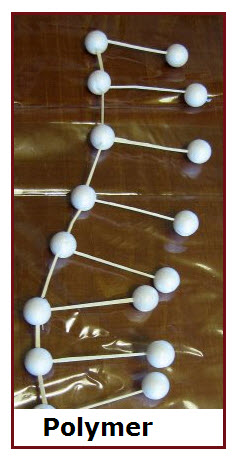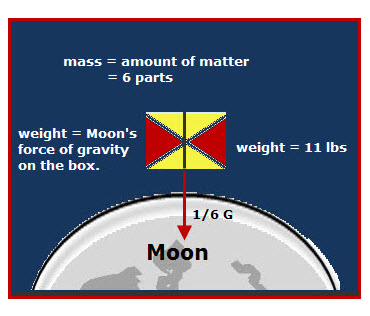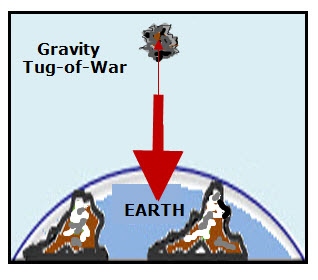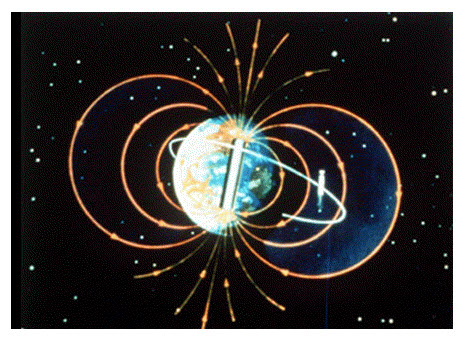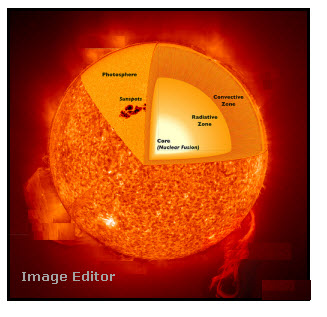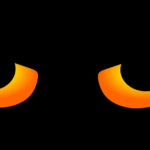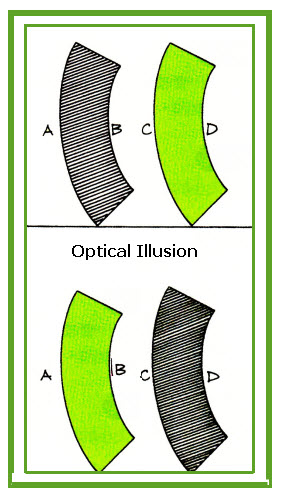Don’t let the term polymer scare you. Making polymers is great fun, but a bit messy. Even so, it is worth it. It you have not made Slime using glue and borax, you are in for a treat. If you have made it, try adding a secret ingredient so that it fluoresces. OOPS! Another one of […]
Mass vs. Weight
The difference between mass and weight is often difficult to explain. I have created two diagrams that I think will help. First, let’s compare the mass and the weight of a box on Earth. Since mass is defined as the amount of matter that something is made up, I decided to identify the amount of […]
DNA Extraction: Human
DNA from Human Cheek Cells This video not only gives you detailed instructions for separating DNA from human cheek cells, but there is a graphic explanation of the process. Note: 1. Eight grams of table salt is about three-fourth teaspoon. 2. Use salt without Iodine.
Gravity vs. Mass
The difference in the mass of objects determines which will win in a gravity tug-of-war between them. The mass of Earth is 5.97 x 1024 kg.
Magnetosphere
Question: What and where is Earth’s Magnetosphere? Answer: The Earth has a magnetic field surrounding it with properties much like those of the area surrounding a bar magnet. The photo below shows iron filings tracing out the bar magnet’s lines of the magnetic force. The drawing to the right shows lines for Earth’s magnetic field. […]
Atom Timeline
In searching for information about the history of ATOMS, I found several good timelines. First is a list of names and their contributions to the Atomic Theory. Timeline for Atomic History Second is an interactive list of contributors with more information about each person and what they contributed. Atomic Theory Timeline
Snow Globes
I love snow globes. Have you ever wondered what makes the glittery stuff inside the globe drift down slowly? It really does look like falling snow? 1.One factor is the viscosity (thickness) of the liquid. Viscosity is a fancy scientific name for describing the resistance of a fluid (gas or liquid) to flow. It could […]
Cosmic Rays
Question: What are cosmic rays? Answer: Cosmic rays sound like something from a science fiction movie. They are a type of radiation that originates in outer space, but are not rays. Instead, a more correct name would be “cosmic particles.” Sometimes common names continue to be used even though they are incorrect. Cosmic rays can […]
Night Vision
Question: Why can nocturnal animals, such as owls and cats, have better night vision than daytime hunters? Answer: Animals that hunt at night have more rods in their eyes than do other animals, including you. So what are rods? The retina is the back innermost part of the eye of animals. In the retina are […]
Vision: Optical Illusion
I love optical illusions. For example, the two curved pieces of paper in the diagram are exactly the same size. I know that because I cut them with the same pattern. I find it fascinating that my brain seems to have a “mind of its own.” What I know and what I see are different. […]
- « Previous Page
- 1
- …
- 68
- 69
- 70
- 71
- 72
- …
- 96
- Next Page »
